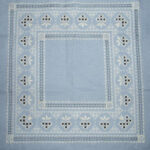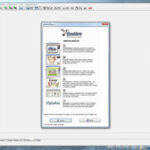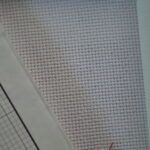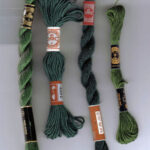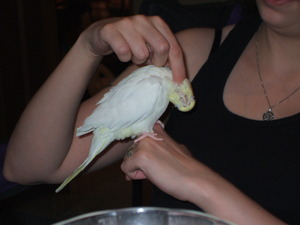A quilt consists of a soft layer of filling sandwiched between two layers of fabric and held in place by rows of stitching.
Top Layer
For the top layer of the quilt use smooth medium-weight material such as cotton, poplin or polyester/cotton. It can be a printed material, or you can use a sheet of patchwork. You can decorate a plain fabric with appliqués or embroidery, but the stitching itself can make a pleasing geometric pattern.
Bottom Layer
Avoid slippery material so the quilt does not tend to slide off the bed. A medium weight fabric that is easy to sew through – such as fine cotton, muslin or flannelette – is ideal. You can use a bed sheet or buy sheeting – perhaps in a color that complements the top.
Filling
Use polyester wadding, which is warm, washable, easy to sew and sold in a range of widths and thicknesses.
Equipment
No 8 or 9 needles are suitable for quilting most fabrics; No 7 is best for heavier material, No 10 for material that is fine or delicate. Buy ‘betweens’ 32mm long, or 38mm ‘sharps’. try both and see which you like best.
The thread you uses must be strong; No 40 cotton thread, silk or buttonhole twist, or polyester sewing thread, are all suitable. If using cotton thread, rub it on a cake of beeswax to reduce tangling and fraying.
For small items you can buy a quilting frame or hoop to hold the layers taut as you sew; major stores or haberdashery shops sell them. Alternatively, you can use a tapestry frame, though a full size bed quilt is best done on a purpose made frame. You will also need a thimble, a rubber finger pad, scissors for cutting templates and dressmaker’s scissors.
Measuring and Cutting
Plan the design and measurements on graph paper. Make templates of thin card for the different shapes of your pattern. The rows of quilting can be as much as 150mm apart when you are using polyester wadding, because it does not easily disintegrate. To compensate for take-up when stitching , the wadding should be about 25mm larger all round than the size of the finished quilt.
For the same reason, when cutting fabric for the top and bottom layers, allow 20-50mm extra all round.
If the backing is to be used as a border the bottom layer should be larger than the top layer by twice the width of the proposed border, plus 13mm for turning under.
Assembling, tacking and quilting the layers
Spread out the backing and lay over it the wadding and the quilt top.
Measure the four sides and mark the center of each with a pin. Tack one horizontal and one vertical line connecting the midpoints of the opposing sides and intersecting at the center of the quilt, so that it is divided into quarters. Tack all round the quilt from the middle to the edges in a sunburst pattern.
Work slowly and carefully – good tacking is essential for an even, unpuckered finish, and must be particularly secure if you plan to quilt without using a hoop or frame. Do not kneel or lean on the fabric – this can create hidden wrinkles in the wadding and backing. The tacking can be snipped out during actual quilting.
Mark any patterns for quilting on the top layer, using your templates and dressmaker’s chalk.
If you are using a hoop or frame, secure the part for stitching in it. Start at arms length and work towards yourself, using short, even, running stitches. Make sure each stitch penetrates all three layers.
Self – edging
Fold the edges of the backing over the wadding; then turn the edges of the top layer under. Whipstitch the folded edges together all round, making the stitches as small and neat as possible.
Backing as border
After quilting, turn under the edges of the backing. Then fold the part of the backing that is to become the border, slip stitching the turned in edge of the border to the edge of the top layer of the quilt. Miter and slip stitch the corners neatly.
